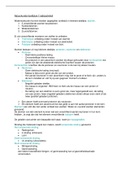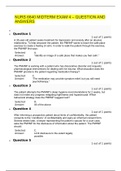Visual
Evaluation of the interactionist approach for treating schizophrenia
This page contains the key information and studies to evaluate the interactions approach as a way to treat schizophrenia. These studies have been sourced via several sources including the AQA second-year psychology textbook (found on the illuminate publishing website). This saves a lot of time you ...
[Show more]













